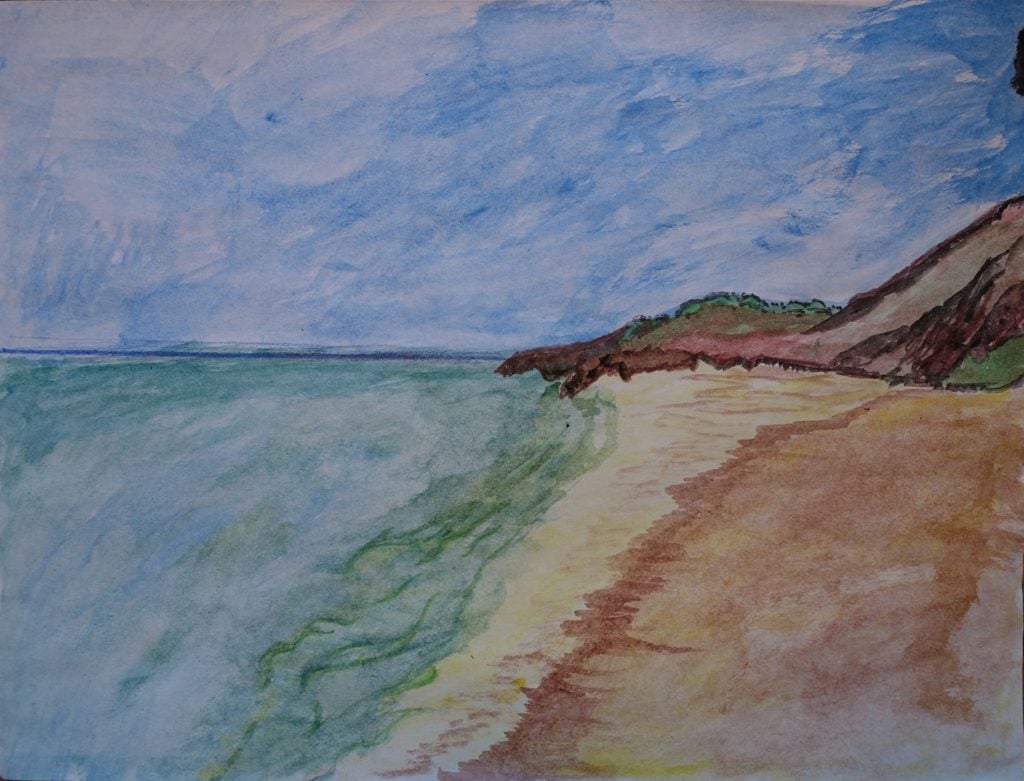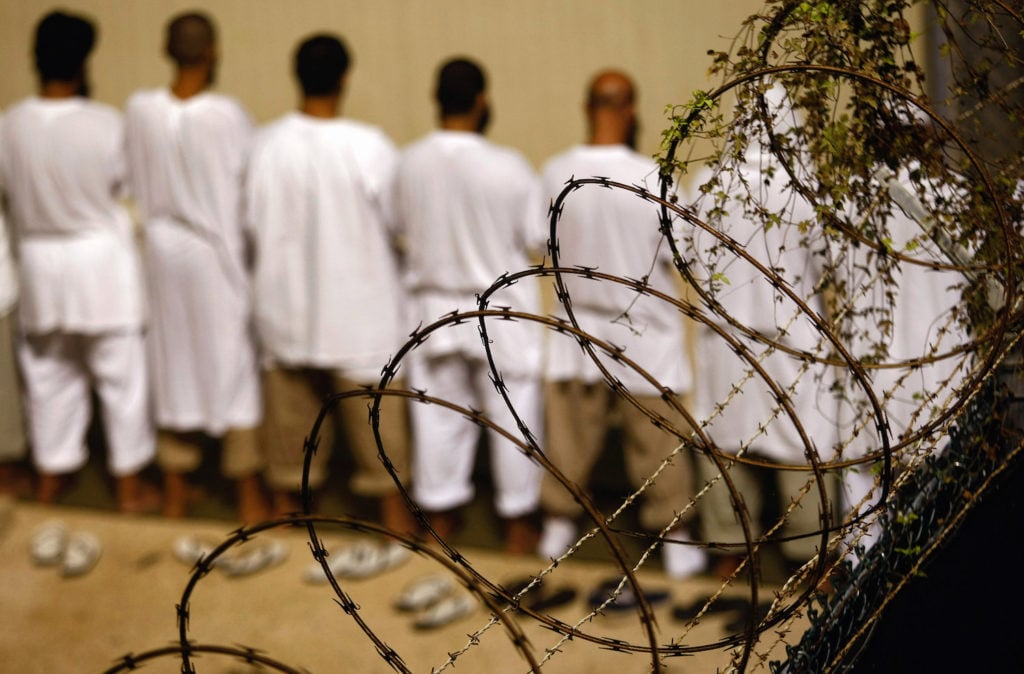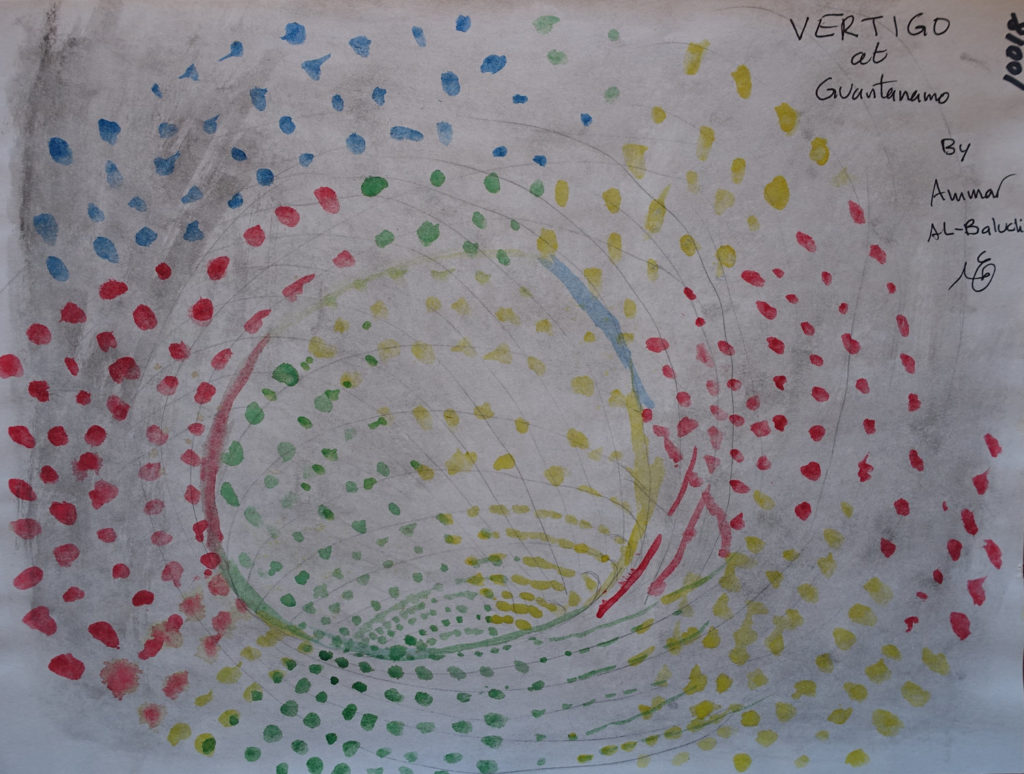Politics
A Guantánamo Detainee Is Fighting the US Government for the Right to Display His Art
Ammar al-Baluchi has been a prisoner of the US since 2003.

Ammar al-Baluchi has been a prisoner of the US since 2003.

Sarah Cascone

The lawyer for Ammar al-Baluchi, a detainee-turned-artist held at Cuba’s Guantánamo Bay dentition facility, is pushing the government to stop restricting access to his artwork. After he was included in a controversial New York exhibition highlighting the work of Guantánamo detainees last year, the Department of Defense made a policy change to prohibit the sharing and dissemination of art by inmates of the detention facility.
Now, Al-Baluchi’s attorney, Alka Pradhan, has filed a motion to a military commission, calling the move a violation of her client’s rights. Pradhan believes that Al-Baluchi’s artwork is a valuable tool in his upcoming trial, where he potentially faces execution. Al-Baluchi has been in US custody since being captured in 2003 and was transferred to Guantánamo after three-and-a-half years in CIA custody.
“Both the creation and public dissemination of Mr. Al-Baluchi’s artwork has become incredibly important for his mental health; both in terms of mitigation value in his death penalty case, and for the therapeutic value to alleviate the effects of his torture,” Pradhan wrote in an email to artnet News, adding that the detainee’s artwork could make him seem more sympathetic when it comes time to sentencing at the military tribunal.

Detainees stand during an early morning Islamic prayer at the Guantánamo Bay US military prison. Photo by John Moore/Getty Images.
Al-Baluchi stands accused of working for Al-Qaeda to plan 9/11, and helping finance some of the hijackers’ trips to the US. His uncle, Khalid Sheikh Mohammed, also a Guantánamo detainee, is believed to be the principal architect of the September 11 attacks.
“While [Al-Baluchi] is detained, the government does have the right to restrict public dissemination through legitimate regulation or legislative means, but has not chosen to do so—instead, they continue saying, without legal basis, that they ‘own’ his artwork,” Pradhan said.
When questioned on the matter by the Associated Press, Navy Commander Sarah Higgins, a Pentagon spokeswoman, insisted that all artworks made at the detention center “remain the property of the U.S. government.” (The Department of Defense did not respond to artnet News’s request for comment.)
Two of Al-Baluchi’s artworks, Seashore and Vertigo at Guantánamo, were included in the controversial exhibition “Ode to the Sea: Art from Guantánamo Bay,” which was on view at New York’s John Jay College of Criminal Justice until mid-January. The exhibition provided a rare window into the lives of detainees at Guantánamo Bay, and the inhumane treatment that many of them have allegedly suffered while being held for years on end without due process.

Ammar Al-Baluchi, Vertigo at Guantánamo. Courtesy of Art From Guantánamo Bay.
Vertigo, for instance, is Al-Baluchi’s illustration of the debilitating medical condition that he now allegedly suffers from after years of torture at the hands of the CIA prior to his transfer to Guantánamo. It was the widespread dissemination of this disturbing image, with its disorienting array of swirling colored dots, that appears to have led to the current crackdown.
For years before, “nobody in the government had an issue with [releasing prisoners’ work]. The artwork was going to their families, it was given as gifts to their lawyers,” the Guantánamo Bay cultural adviser, known as Zaki, told the Miami Herald. “Everything was going fine until the lawyers decided to parade their artwork in New York City… there is no need to parade it in the streets and to have people take pictures of it and show it. That’s where the screw-up was.”
The artworks are now off limits, Pradhan insisted, “solely because [defense officials] were embarrassed by the spotlight on continuing human rights violations at Guantánamo.”
The question of detainee art has become a hot-button issue since the New York exhibition, with Navy Rear Admiral Edward Cashman giving a press conference on the matter in February. “I don’t have a project to build a detainee art museum. I don’t have a project to hire a detainee art curator,” he told reporters, adding that prisoners’ work is routinely destroyed when the artist no longer wishes to keep it.
Currently, Al-Baluchi does not have access to art supplies to make new work, a situation Pradhan hopes to rectify in the coming weeks. He has been forced to turn down numerous requests to exhibit his work since the New York art show.